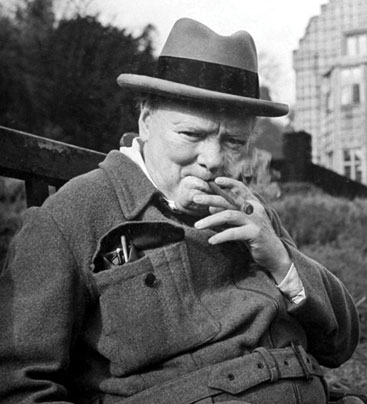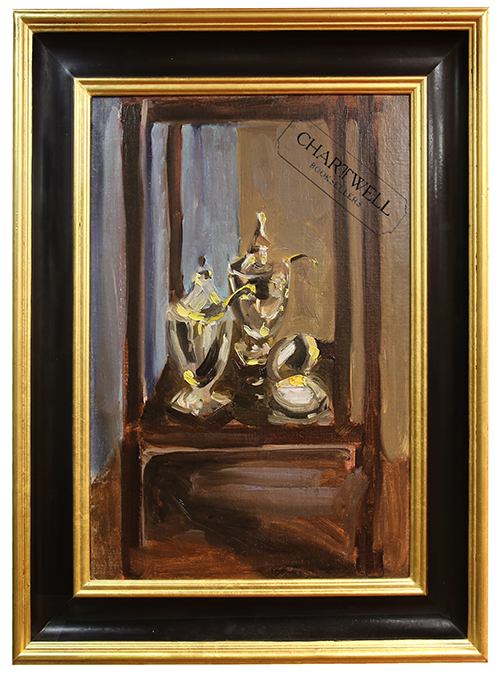An Original OIL PAINTING by Winston Churchill
“SILVER LIFE”
1930s
Provenance: The Studio, Chartwell; Arabella Spencer-Churchill (1949-2007); By Direct Descent
(19 7/8 x 14 inches)
Item Number: 204852
Description
Winston Churchill finished exactly 537 paintings. They are relatively easy to count; nearly all of them still reside at Chartwell, his home, hanging on the walls of the house itself or in his painting studio, stacked carefully in corners or filling purpose-constructed nooks, from floor to ceiling. It is rare for one of these paintings to leave Chartwell. Those that have generally departed as gifts presented by Churchill himself, who sometimes gave paintings away but never sold a one. His family inherited them all, in various groupings, but have mostly left them where they are.
“Silver Life” is a striking still-life painted at Chartwell by Winston Churchill in the 1930s; his so-called “Wilderness Years.” Out of power, out of office and increasingly out of money, Churchill clung to Chartwell, writing articles and books there in a frenzy to pay the bills, while painting to preserve his sanity.
“Silver Life” comes to us directly from a member of the Churchill family. The three objects depicted in it are two silver lidded vases with ladles — the work of Mappin & Webb, circa 1915 — and a lidded ashtray of indeterminate date. Recently, the vases were on formal display at Chartwell.
Mary Soames wrote about her father’s affinity for still-life: “Forced indoors by the weather, he would look around him for subjects. Members of his family or friends would advise, or hurry to help him compose a ‘paintatious group.’ It might be a ‘bottlescape like the one that hangs in the dining room at Chartwell…or a study in silver…”
David Coombs, our foremost authority on Churchill the Painter, the compiler of Churchill’s catalogue raisonne, has written of “Silver Life:”
“By any objective standards, this painting is a splendid example of ‘Modern British Art.’ That it is by Winston Churchill may come as a surprise to many — but not to those who, in recent times especially, have come to appreciate the real quality of his best work.”
To appreciate this painting up close is to marvel at Churchill’s unexpectedly tactile impasto technique, the lustrous physicality of his brush strokes, particularly the glittering yellows of light reflecting off the silver pieces. Mr. Coombs notes the ineffable influence here of the artist William Nicholson, who lived at Chartwell as a more or less permanent houseguest during the period in which “Silver Life” was painted. Nicholson was “a peerless master of still-life painting,” Coombs writes. “Which being said, “Silver Life” is, in its characteristic dash and verve, and decided inclusion of a diaphanous curtain, representative in every way of Churchill’s own and very best work.”
All true. But something else is striking about “Silver Life” up close. There is a storminess to the background strokes in the gold and brown of that curtain and an unsettledness to the sky blue, shot through with melancholic tones of violet. There is also much black in the silver. The gold daubs struggle mightily to burst through, glimmers of sunshine in a moody canvas. Could “Silver Life” be a painting of Churchill’s tortured psyche in the mid-1930s and his determination to triumph over his troubles and glitter once more?
You decide.



